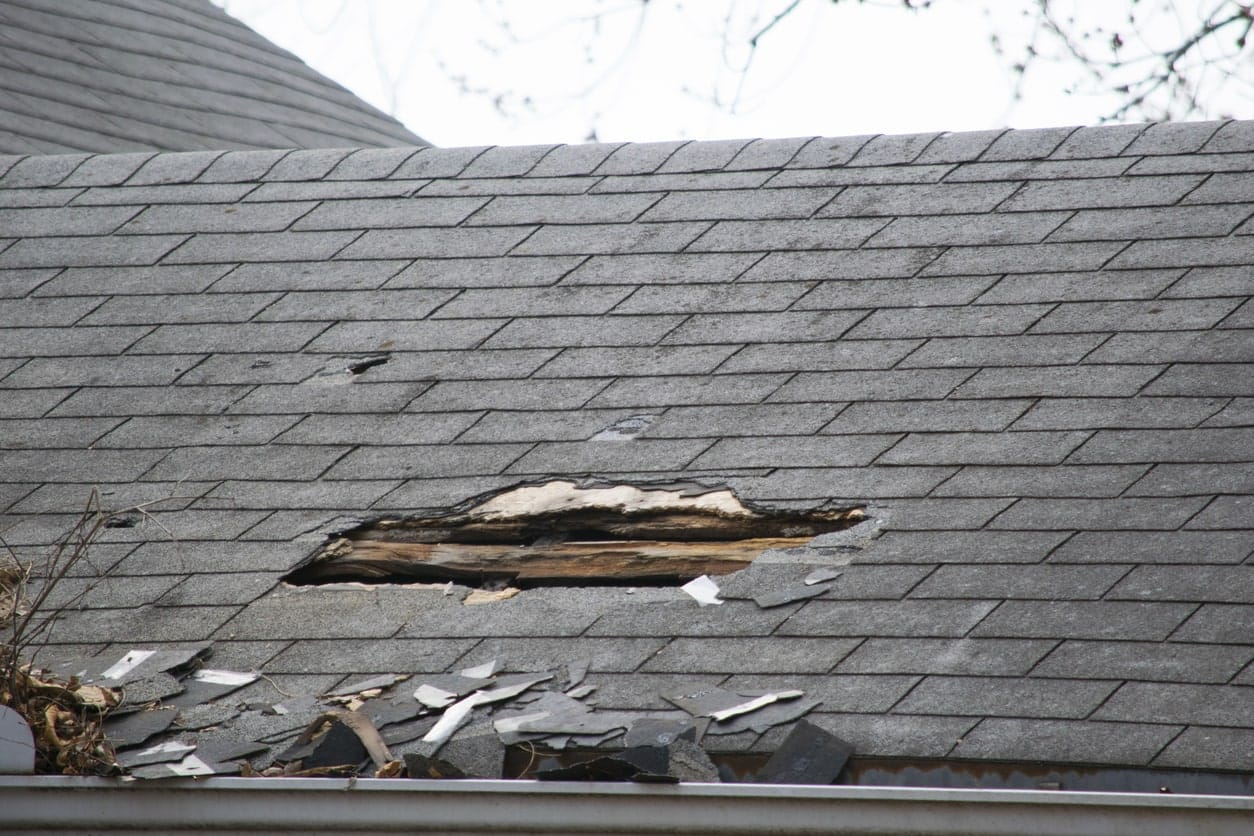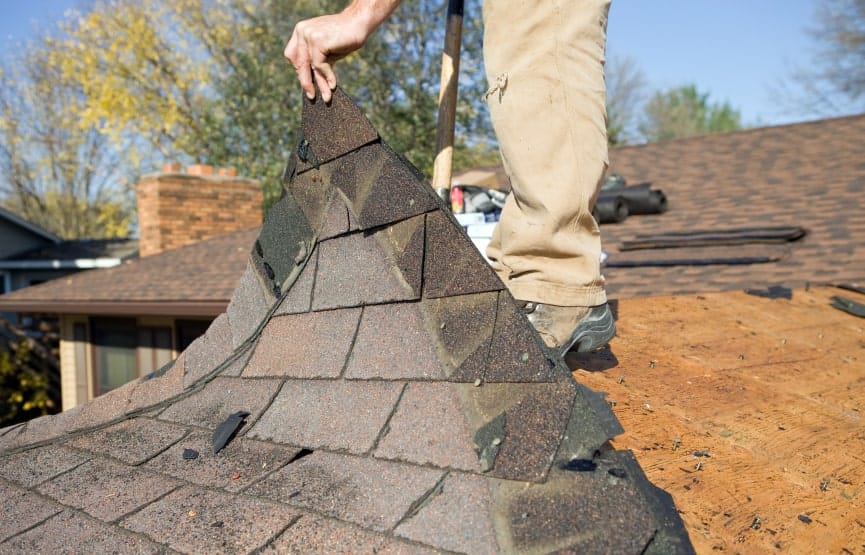Wind Damage On Your Roof? Here’s How To Tell
Roof maintenance is an essential part of keeping your home healthy; but with wind damage on your roof, you may not know that there are issues. Here’s how you can.

The weather can wreak all sorts of havoc with your roof.
- The snow creates ice dams and water overflow
- Rain washes away granules and damages your shingles
- Wind creates all kinds of problems
How can you tell if the wind has damaged your roof?
There’s lots of ways to tell, so here’s how to inspect your roof and fix any problems that you come across.
Wind And Your Roof
Typically, wind won’t damage your roof. It will have been built with a certain wind resistance in mind.
That means if you suffer high winds, you may not encounter any problems at all with your roof. Over time though, wind will take its toll on the roof.
That’s because a rood isn’t uniformly affected by wind. It’ll suffer more stress at the edges and corners, places where wind can get underneath and start to pull at it.
- The first time it happens, it’ll cause a small amount of damage, leaving material just a little loose.
- The next time you get bad weather, it’ll pull at it a little more, now that it has more area to pull at on your roof.
- This cycle will keep happening until you get serious wind damage.
Wind damage leads to more serious damage over time. If anything is pulled loose, that means that the roof is no longer watertight.
The next time you get rain, that water will make its way into the roof, causing damage. If you don’t see it in time, that will lead to rot and mold, and possibly even a new roof entirely.
This is why it’s so important to keep inspecting your roof.
After every storm, get up on your roof and take a look at it.
Is there anything that’s loose or missing?
Replacing it now will save you more expensive repair bills down the line.
Signs Of Wind Damage On Your Roof
So, how do you know if there’s been wind damage on your roof? There are several signs that you should be looking for.
1. Loose or missing shingles:
This is one of the more obvious signs that you’ll see on your roof. If the wind has managed to get under your roof shingles, it’ll pull them loose or even blow them away.
This is easily solved, though. You’ll need to get some replacement shingles and replace those broken and missing shingles on your roof.
It’s usually a good idea to order an extra box when you replace your roof, so you have similar colored shingles to use.
2. Damaged or clogged gutters:
As the wind picks up, it’ll take debris with it. This debris easily ends up on your roof, especially if you have trees nearby.
When you take a look at your roof, look at the guttering. It could be full of leaves and debris. This clogging will lead water to overflow out of your gutters, causing water and mold problems.
You can easily unclog them by pulling the debris out. If you want, you can install a gutter guard in order to stop debris getting back in again.
While you’re looking at your gutters, take a look for any decay or damage they may have taken.
- For example, are they loose or sagging?
- Are they only loosely attached to the building?
- Are there any sections missing?
If they’ve taken a lot of damage, it may be time to replace them.
3. Flat roof blisters:
Flat roofs are susceptible to damage as they don’t allow rain or debris to roll down them. That means it can collect on the roof, causing damage.
Take a look at your roof, looking for blisters on the surface, cracks, or tears. If you find anything, call a roofing company to come and repair the damage for you.
4. Tree damage:
As mentioned earlier, if there are trees near your home, then they can blow leaves into the gutters when the wind picks up.
Branches can even come down on the roof, causing unrecoverable damage.
- If you see a branch on your roof, you’ll need to remove it as soon as possible to assess the damage.
- If they fell hard enough, they can damage shingles and timbers on the roof, allowing water to come in.
Have the damage repaired as soon as possible.
5. Flashing damage:
Flashing is the material that’s used to seal joints around your roof, for example you’ll see it where your chimney meets the roof.
In high winds, this flashing will take damage. If it’s damaged, you’ll see that it’s buckled, or that it’s started to tear away from the roof.
This will need to be replaced quickly in order to protect your roof.
6. Indoor damage:
If the wind has damaged your roof, then the signs of it won’t just be on the outside. Take a look inside your home, especially at the ceilings.
- Are there any water stains or marks? That could be a sign that water is making its way through the roof and into your home.
- You’ll also want to get into the attic and take a look. You’re looking for any light that’s making its way through the roof, into the attic space. If you’re seeing light, that means that the roof has been damaged.
Call In The Experts
When it comes to roofing, it’s always a much better idea to call in the experts. You can get on the roof yourself, but the danger is you could get injured.
You don’t want to take that risk, so bring in roofers who are trained, and have the right equipment to keep themselves safe.
They’ll inspect the roof for you, and let you know if anything needs to be done.
They’ll undertake the repairs, ensuring that your roof is in good shape again in no time.
Conclusion
Now you know what you’re looking for to determine if there is wind damage on your roof. Inspect it regularly, and if you see any problems, bring in roofers to handle it.
The sooner you correct the problem, the easier, and cheaper it will be.


